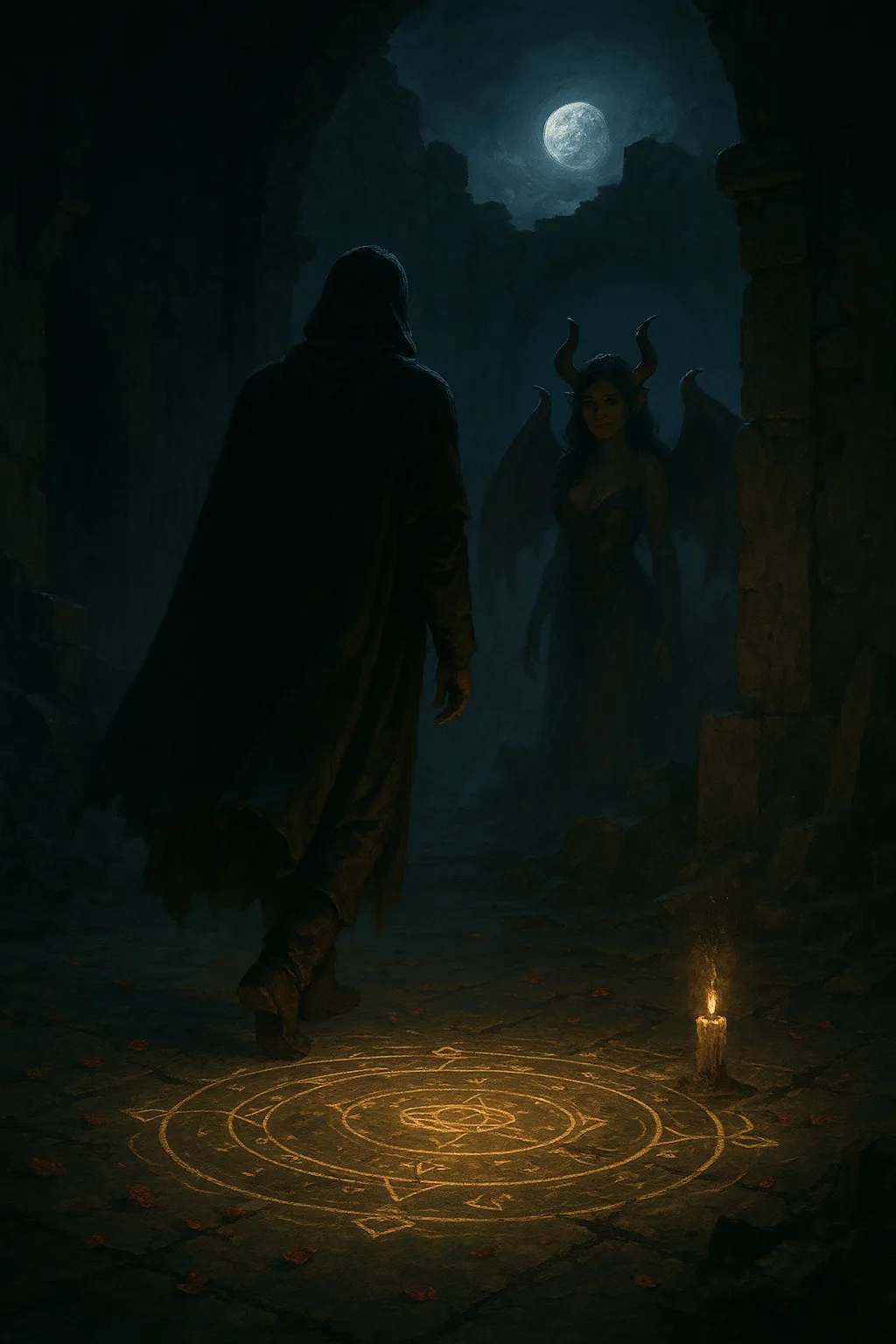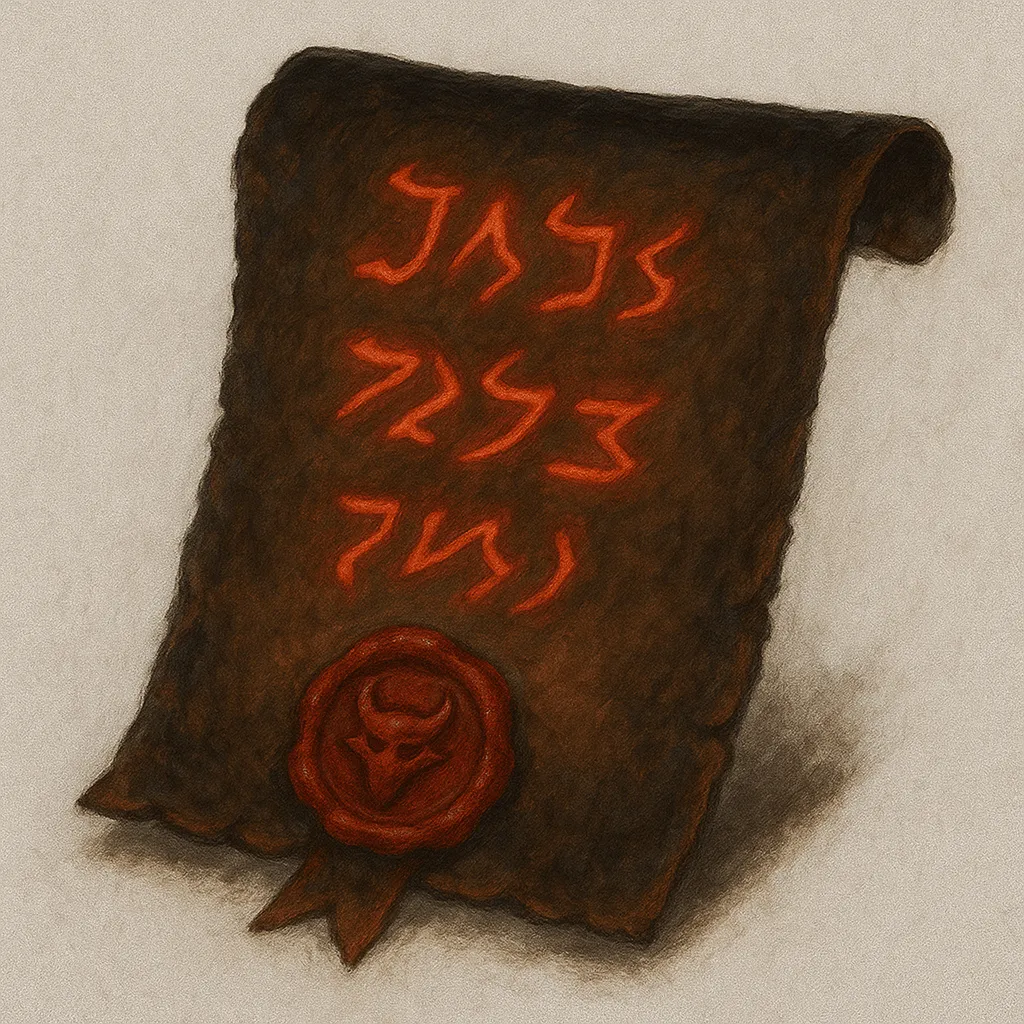
To speak of one is an attempt to name a shadow cast by inner longing.
Among the most insidious of infernal beings are those classified collectively as Temptor Demons—entities that blur the line between spirit and flesh, illusion and intimacy. Known in older texts as incubi and succubi, these demons are not truly male or female in the mortal sense. Rather, they assume the form that most effectively penetrates the mental and emotional defenses of their chosen target. Gender, beauty, and voice are all tools in their arsenal—a glamour layered atop something far less human.
 Temptor Demons operate not through brute force or overt threat, but through seduction, suggestion, and enticement. They are predators of will, feeding upon the energy generated by desire, guilt, repression, and longing. To call them merely “lust demons” is to misunderstand their deeper purpose. Their allure is not always carnal—it may take the form of comfort, confidence, vengeance, or validation. They offer what the victim most wants to believe is within reach. When they succeed, the result is not only the siphoning of spiritual vitality, but often the unmaking of identity, purpose, or sanity.
Temptor Demons operate not through brute force or overt threat, but through seduction, suggestion, and enticement. They are predators of will, feeding upon the energy generated by desire, guilt, repression, and longing. To call them merely “lust demons” is to misunderstand their deeper purpose. Their allure is not always carnal—it may take the form of comfort, confidence, vengeance, or validation. They offer what the victim most wants to believe is within reach. When they succeed, the result is not only the siphoning of spiritual vitality, but often the unmaking of identity, purpose, or sanity.
 While commonly referred to as incubus (when appearing masculine) or succubus (when appearing feminine), such distinctions are mortal frameworks laid over a more fluid truth. Witness accounts suggest the same demon may shift between these forms at will—or even simultaneously manifest aspects of both, should it suit their manipulation. What remains constant is their hunger, their patience, and their role as emissaries of the deeper infernal orders.
While commonly referred to as incubus (when appearing masculine) or succubus (when appearing feminine), such distinctions are mortal frameworks laid over a more fluid truth. Witness accounts suggest the same demon may shift between these forms at will—or even simultaneously manifest aspects of both, should it suit their manipulation. What remains constant is their hunger, their patience, and their role as emissaries of the deeper infernal orders.
Temptor Demons are most active where emotional wounds fester: temples fallen to hypocrisy, noble courts tangled in unspoken desires, monasteries gripped by silence and shame. Yet they are not confined to places of power. A single wandering soul, lost in grief or unmet yearning, may attract their attention just as readily. In dreams they appear first—beautiful, comforting, or intoxicating. Their presence is rarely recognized immediately; it is only after repeated visitations that the mind begins to blur the border between dream and waking desire.
 In traditional demonological taxonomy, Temptor Demons are classed as whisper-borne invokers, meaning they often gain entry not through ritual summoning, but through subconscious invitation. A whispered plea into the night—“I wish they loved me,” or “I would give anything for one more moment”—can be enough to catch their attention. Once noticed, the demon begins its slow courtship of the soul, appearing in dreams, altering memories, and gradually coaxing deeper reliance. They do not take by force; they make their victims give willingly—or believe they do.
In traditional demonological taxonomy, Temptor Demons are classed as whisper-borne invokers, meaning they often gain entry not through ritual summoning, but through subconscious invitation. A whispered plea into the night—“I wish they loved me,” or “I would give anything for one more moment”—can be enough to catch their attention. Once noticed, the demon begins its slow courtship of the soul, appearing in dreams, altering memories, and gradually coaxing deeper reliance. They do not take by force; they make their victims give willingly—or believe they do.
 Their feeding process is subtle. Unlike more volatile demons, Temptors do not tear the soul apart all at once. Instead, they extract vitality through repeated exchanges: a night’s sleep leaves one feeling drained; a moment of triumph followed by inexplicable despair; a deepening need for the demon’s return. Victims often become possessive, obsessive, and eventually hollow. By the time a Temptor is fully satiated, the person they fed upon may barely resemble who they once were.
Their feeding process is subtle. Unlike more volatile demons, Temptors do not tear the soul apart all at once. Instead, they extract vitality through repeated exchanges: a night’s sleep leaves one feeling drained; a moment of triumph followed by inexplicable despair; a deepening need for the demon’s return. Victims often become possessive, obsessive, and eventually hollow. By the time a Temptor is fully satiated, the person they fed upon may barely resemble who they once were.
 Temptor Demons serve a variety of roles in the infernal hierarchy. Some are agents of high demon lords, tasked with breaking specific souls or corrupting sacred bloodlines. Others act as autonomous hunters, wandering from world to world seeking particularly potent emotions to feed on. A rare few are bound, tethered to cursed artifacts, locations, or names—summoned again and again by those foolish enough to believe they can control what follows.
Temptor Demons serve a variety of roles in the infernal hierarchy. Some are agents of high demon lords, tasked with breaking specific souls or corrupting sacred bloodlines. Others act as autonomous hunters, wandering from world to world seeking particularly potent emotions to feed on. A rare few are bound, tethered to cursed artifacts, locations, or names—summoned again and again by those foolish enough to believe they can control what follows.
 Among their known forms, regional variations and folklore abound. The Pale Incubus of Vale-Gray is said to appear only to widows, offering them comfort in the shape of their lost spouses. The Velvet Succubus of the Eastern Delta is known for leaving behind traces of perfume and petals, even when appearing to male victims. In ancient desert kingdoms, the Desert Voice—neither male nor female—sings to travelers in sleep, drawing them to their death under starlit dunes. These stories are not separate entities, but likely masks of the same underlying truth: the Temptor adapts to the vulnerabilities of its prey.
Among their known forms, regional variations and folklore abound. The Pale Incubus of Vale-Gray is said to appear only to widows, offering them comfort in the shape of their lost spouses. The Velvet Succubus of the Eastern Delta is known for leaving behind traces of perfume and petals, even when appearing to male victims. In ancient desert kingdoms, the Desert Voice—neither male nor female—sings to travelers in sleep, drawing them to their death under starlit dunes. These stories are not separate entities, but likely masks of the same underlying truth: the Temptor adapts to the vulnerabilities of its prey.
 Despite their elegance, Temptor Demons are not invincible. Certain wards—especially those rooted in clarity of mind and control of desire—can repel them. A strong sense of self is often the most effective defense. Ironically, it is not purity that protects against them, but balance—the awareness and mastery of one’s own impulses. Temptors exploit denial, not indulgence. A person at peace with their shadow is far harder to seduce than one who represses it.
Despite their elegance, Temptor Demons are not invincible. Certain wards—especially those rooted in clarity of mind and control of desire—can repel them. A strong sense of self is often the most effective defense. Ironically, it is not purity that protects against them, but balance—the awareness and mastery of one’s own impulses. Temptors exploit denial, not indulgence. A person at peace with their shadow is far harder to seduce than one who represses it.
Even among demonkind, Temptor Demons are viewed with caution. Their skills are not limited to mortals; there are recorded instances of other demons being manipulated, deceived, or even consumed by them. This makes them valuable but dangerous assets in infernal politics. When a lord of flame wishes a rival weakened without open war, it is often a Temptor who is dispatched.
As with many demons of high cunning, there are those who seek to summon and bind them—either for power, pleasure, or revenge. These attempts almost always end poorly. Binding a Temptor does not sever its will; it only delays its patience. Many who believe they control such demons find themselves overthrown, outwitted, or ruined by their own wishes turned against them.
The following magical heirlooms are fictional and lore-based in nature. Each one is an affiliate link to a real-world item on Amazon that we've hand-selected to complement this artifact's lore.


If you click a link and buy an item, we may earn a commission.It costs you nothing extra, but can help keep this little corner of the internet glowing.
What does this mean?
Unlocked, unguarded and overflowing with treasure...

Summoned from the Sock Dimension, it’s great at holding snacks, bad at boundaries, and constantly trying to pat your head encouragingly.

While not yet translated, it is believed to be an ancient ritual performed to acquire a longer life.

A polished void-orb that reflects no light of this world, murmuring forgotten names to any who dare glimpse their own shadow within its sheen.






